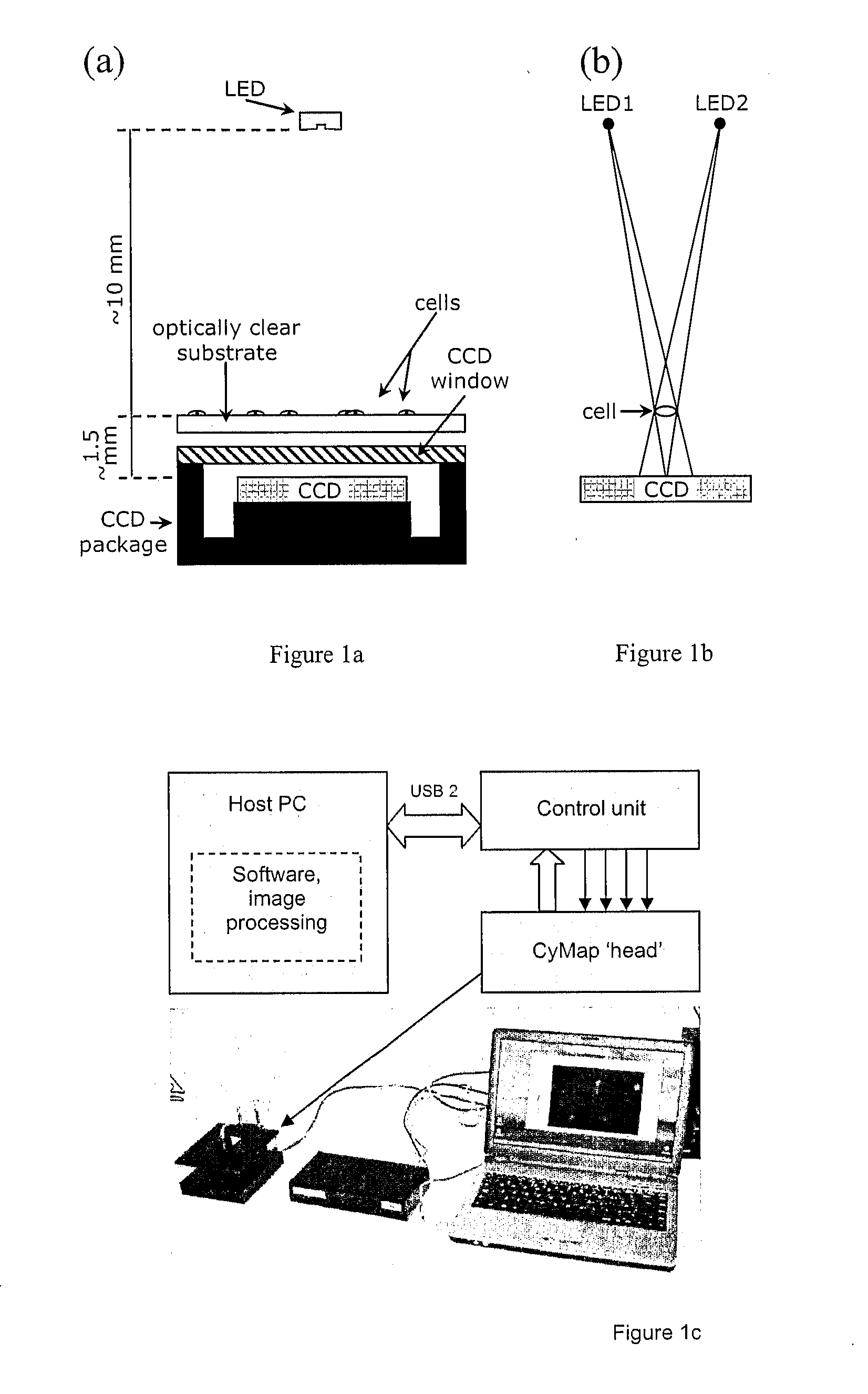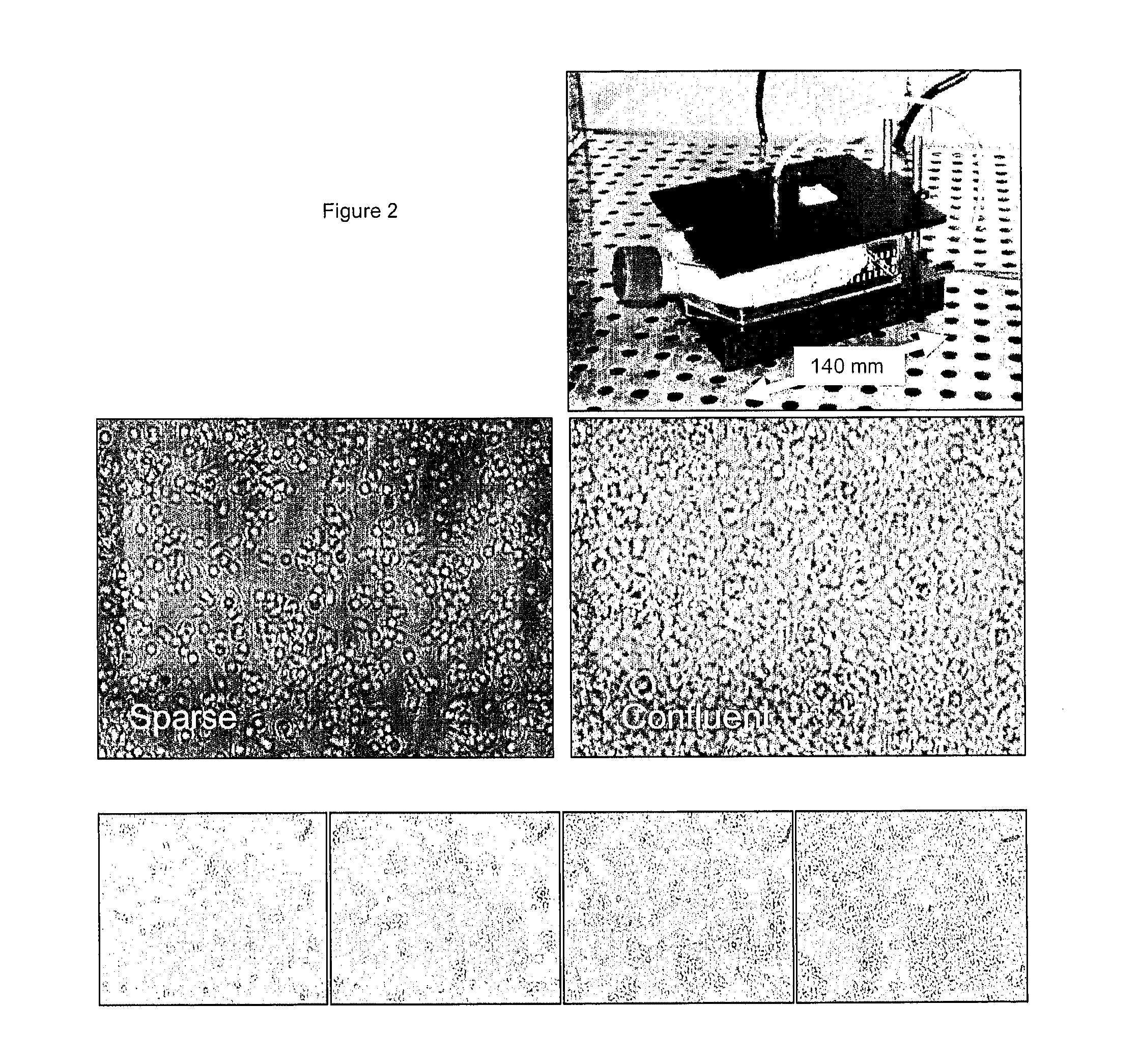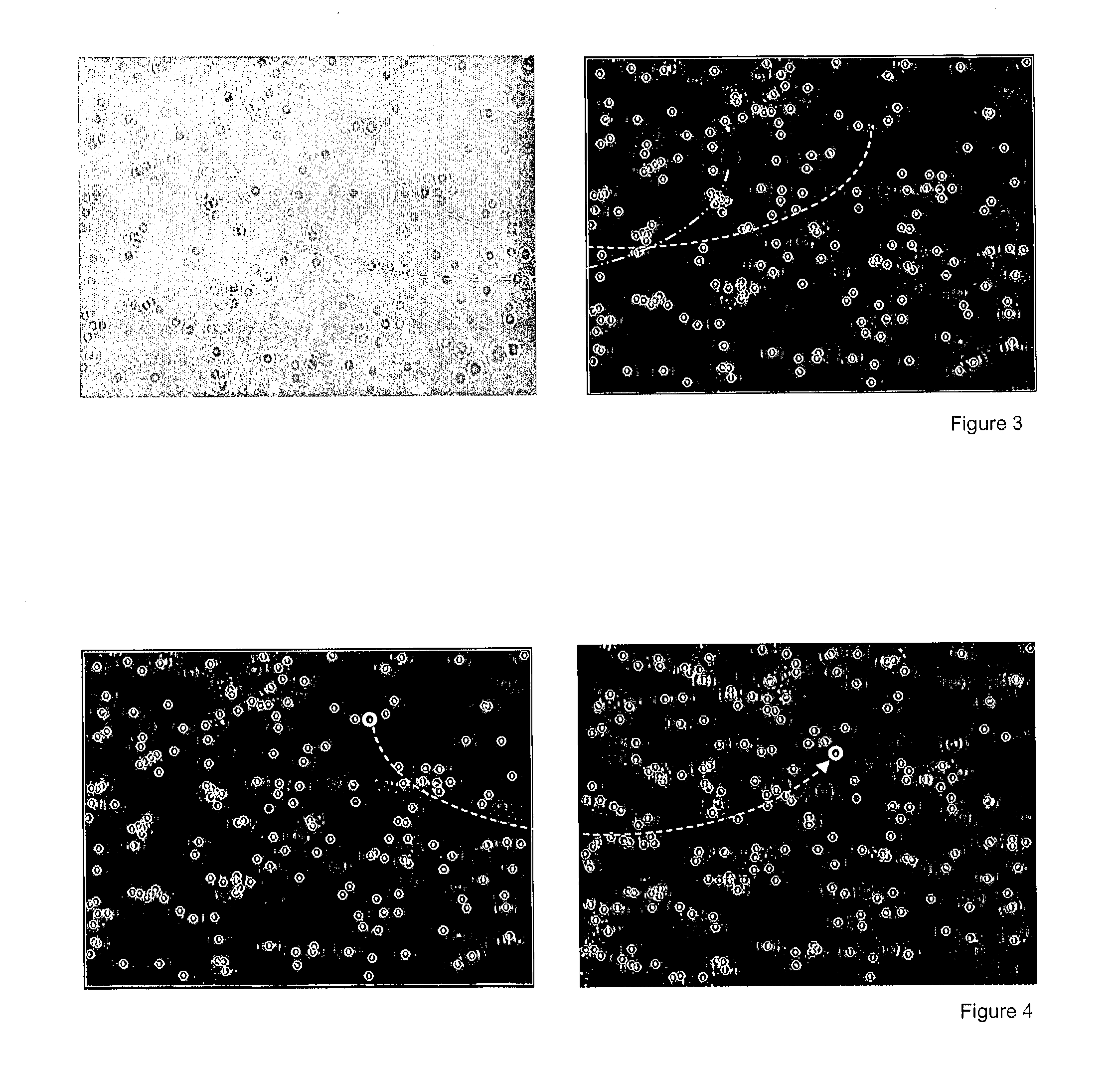Detecting objects
a technology for objects and detection methods, applied in the field of objects detection, can solve the problems of inability to detect single cells, difficult if not impossible, and expensive automatic technologies,
- Summary
- Abstract
- Description
- Claims
- Application Information
AI Technical Summary
Benefits of technology
Problems solved by technology
Method used
Image
Examples
example 1
FIG. 2 shows an example of a CyMap apparatus used inside an incubator (top right image) and typical raw images of cells plated in a T75 flask (middle two images) showing a sparse and near-confluent cell culture. Standard cell preparation and cell growing techniques were used. The flask was imaged throughout the cell growth process, i.e. the flask was located within the CyMap and within the incubator throughout. Selected images at successive time points over a 4 day period, from a ‘movie’ sequence, are shown in the lower four panels.
example 2
FIG. 3 shows ‘Raw’ CyMap image (left) and image-processed result (right). In this instance all attached cells have been ‘found’, one example cell is outlined with a white ring and its location mapped on the raw image (short-dashed line). Note that a ‘floating’ or unattached cell (long-dashed-dot line) is not identified and is rejected by the image-processing software;
example 3
FIG. 4 shows an example of cell coordinate tracking, showing results of image-processing data taken over approximately 24 hours, with a time-interval of 4 hours between the left and right images. The ‘movement’ of one individual is identified by the dashed line and associated white circles;
PUM
| Property | Measurement | Unit |
|---|---|---|
| diameter | aaaaa | aaaaa |
| diameter | aaaaa | aaaaa |
| time | aaaaa | aaaaa |
Abstract
Description
Claims
Application Information
 Login to View More
Login to View More - R&D
- Intellectual Property
- Life Sciences
- Materials
- Tech Scout
- Unparalleled Data Quality
- Higher Quality Content
- 60% Fewer Hallucinations
Browse by: Latest US Patents, China's latest patents, Technical Efficacy Thesaurus, Application Domain, Technology Topic, Popular Technical Reports.
© 2025 PatSnap. All rights reserved.Legal|Privacy policy|Modern Slavery Act Transparency Statement|Sitemap|About US| Contact US: help@patsnap.com



